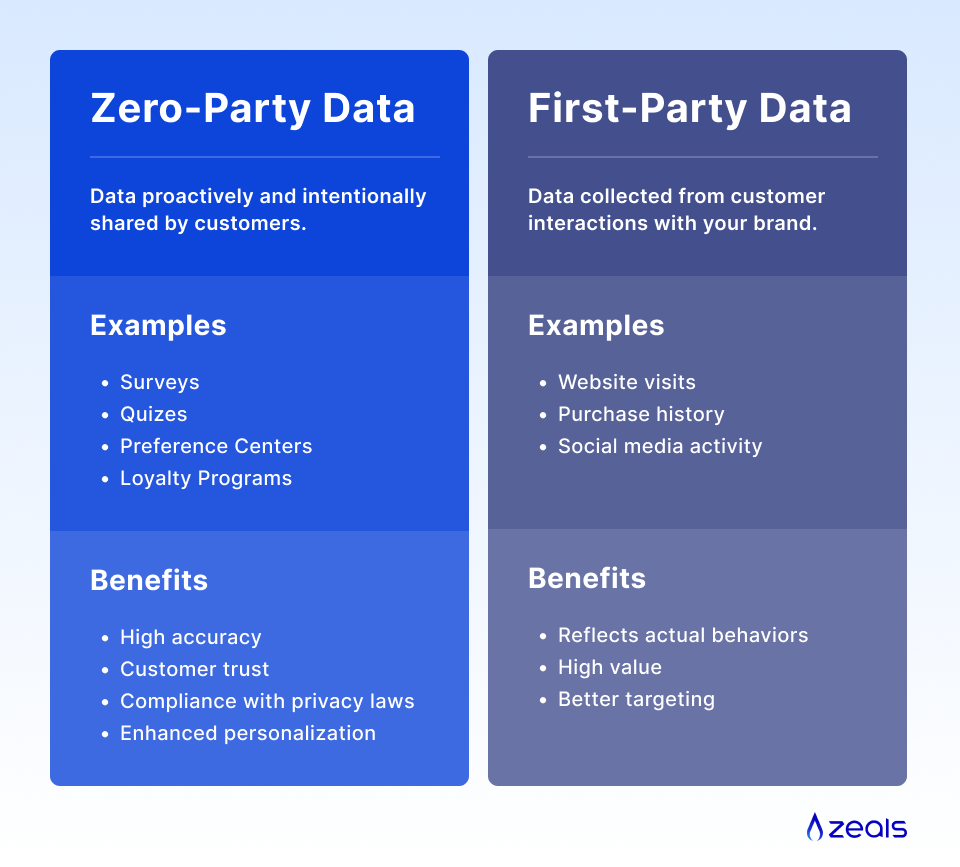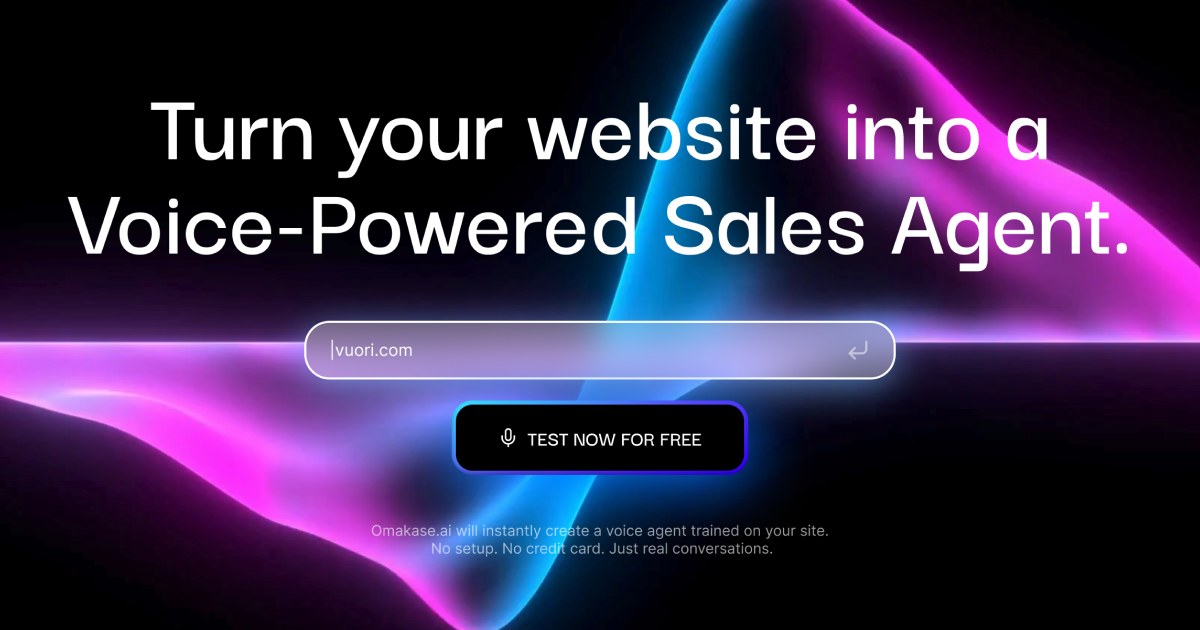Gone are the days when simply having data was enough.
Today, businesses need more—they need trust.
With privacy concerns and data regulations at the forefront of customers’ minds, transparency isn’t just a bonus; it’s essential. This is where zero-party data steps in, offering a path to not only better insights but also stronger, trust-based relationships with your customers.
Discover why zero-party data is quickly becoming the gold standard for the future of customer insights and how it can help you build stronger, more authentic connections with your customers.
Understanding Zero-Party Data
Zero-party data is information that a customer intentionally and proactively shares with a brand. Unlike first-party data, which is collected from customer interactions on websites or apps, zero-party data is voluntarily provided by the customer, often through surveys, preference centers, or interactive content like quizzes. This type of data can include a customer’s preferences, personal context, or the type of products they’re interested in.
Gartner, a leading research and advisory company, first coined the term to describe data that is explicitly shared by consumers, which is then used by brands to deliver more personalized and engaging experiences. This shift towards zero-party data reflects a broader trend in the industry: the increasing importance of transparency, consent, and customer control over personal information.
The Value of Zero-Party Data
Zero-party data is becoming a critical asset for businesses due to several key reasons:
- Accuracy and Relevance: Since zero-party data is provided directly by the customer, it is often more accurate and relevant than data inferred from customer behavior. This leads to more personalized marketing efforts and better customer experiences.
- Customer Trust: By collecting zero-party data, brands can build trust with their customers. When customers willingly share their information, they are more likely to feel confident that the brand will use it responsibly and transparently.
- Compliance with Data Privacy Regulations: With increasing regulations like the General Data Protection Regulation (GDPR) in Europe and the California Consumer Privacy Act (CCPA) in the United States, businesses need to be more careful about how they collect and use customer data. Zero-party data, given with explicit consent, helps companies stay compliant with these regulations.
- Enhanced Customer Relationships: Zero-party data enables businesses to engage with their customers in more meaningful ways. By understanding customer preferences and needs, brands can create personalized experiences that foster loyalty and long-term relationships.
How to Collect Zero-Party Data
Collecting zero-party data requires thoughtful strategies that encourage customers to willingly share their information. Here are some effective methods:
- Interactive Quizzes: Quizzes are a fun and engaging way to gather information about customer preferences. For example, a skincare brand might offer a quiz to help customers find the right products for their skin type. The results of the quiz provide valuable zero-party data that can be used to tailor product recommendations.
- Surveys and Polls: Surveys and polls are traditional methods for collecting zero-party data. These can be embedded on websites, sent via email, or integrated into apps. The key is to keep them short, relevant, and valuable to the customer.
- Preference Centers: A preference center is a feature on a website or app where customers can set their preferences for things like email frequency, content type, and product recommendations. This not only provides zero-party data but also gives customers more control over their experience with the brand.
- Loyalty Programs: Loyalty programs that reward customers for sharing information or engaging with the brand are another effective way to collect zero-party data. Customers are often willing to share their preferences in exchange for points, discounts, or exclusive offers.
Zero-Party Data vs. First-Party Data
It’s important to distinguish between zero-party data and first-party data, as both play crucial roles in marketing strategies:
- Zero-Party Data: This is data that customers willingly provide, often through direct interactions like surveys or preference settings. It’s explicit and does not require interpretation, making it a powerful tool for personalization.
- First-Party Data: This is data collected directly from customer interactions with a brand, such as website visits, purchase history, and social media activity. It’s highly valuable because it reflects actual behavior, but it may require more interpretation to understand customer intentions.

While both types of data are essential, zero-party data is particularly valuable for its accuracy, relevance, and compliance with privacy laws.
Zero-Party Challenges and Best Practices
While zero-party data offers numerous benefits, collecting and using it effectively can be challenging. Here are some best practices to consider:
- Transparency: Be clear with customers about why you are collecting their data and how it will be used. This builds trust and encourages more customers to share their information.
- Value Exchange: Offer something of value in exchange for the customer’s data. This could be a personalized experience, a discount, or access to exclusive content.
- Data Security: Ensure that the data you collect is stored securely and used responsibly. This is critical for maintaining customer trust and complying with regulations.
- Integration: Integrate zero-party data with other types of data (like first-party data) to create a holistic view of the customer. This allows for even more personalized and effective marketing efforts.
The Future of Zero-Party Data
Zero-party data represents a significant shift in how businesses collect and use customer information. By focusing on transparency, consent, and personalization, brands can build stronger relationships with their customers, enhance trust, and stay ahead in a privacy-conscious world. As regulations tighten and consumer expectations evolve, zero-party data will become an increasingly valuable asset for businesses looking to deliver personalized and engaging experiences.











